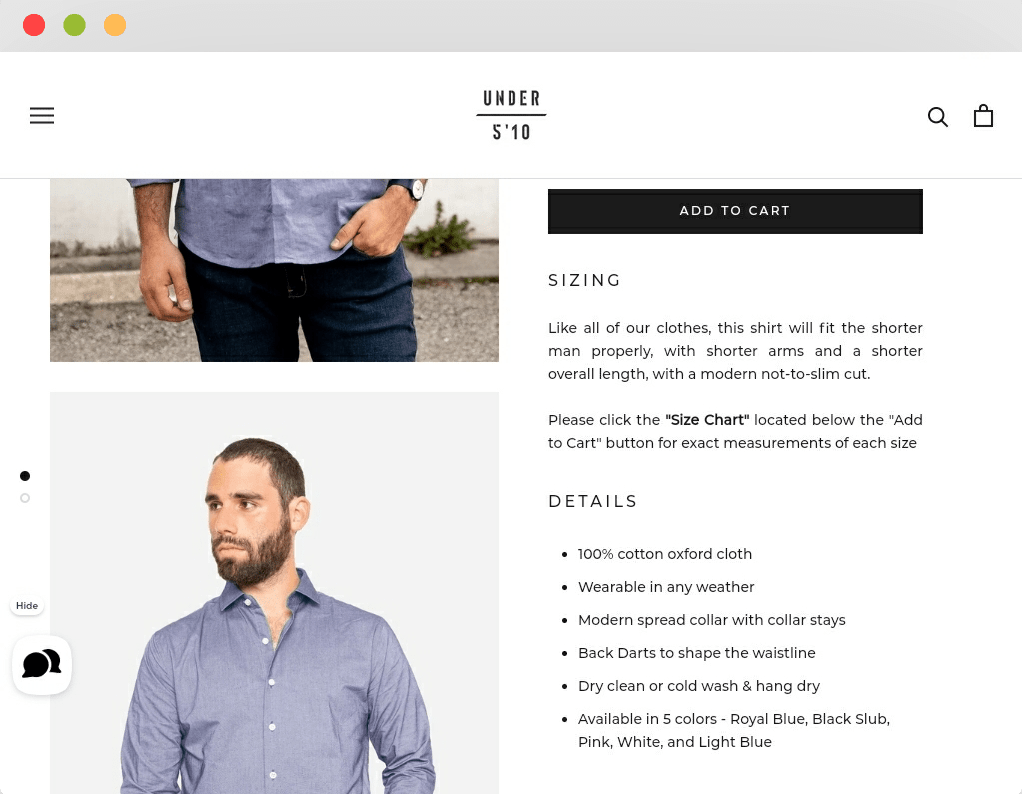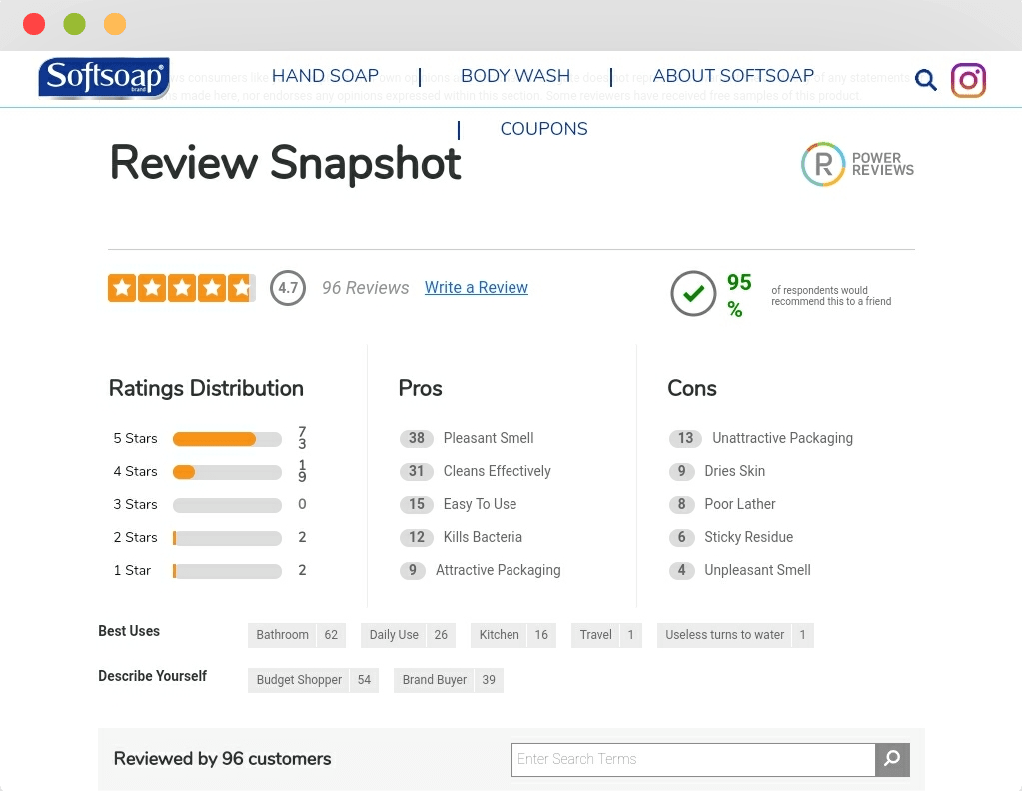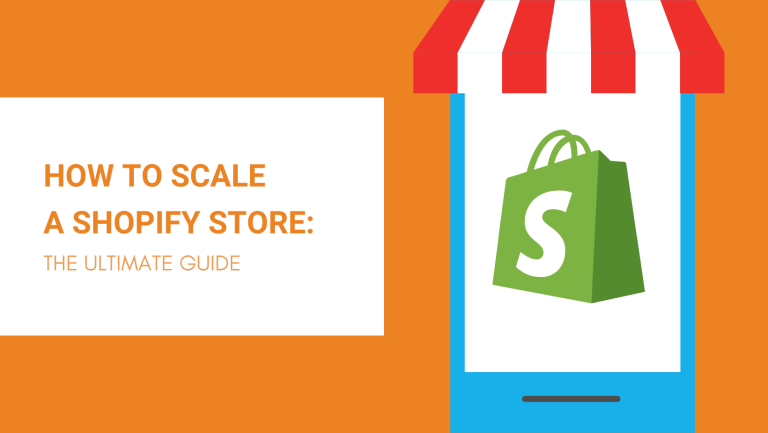Scaling a business entails exploring new strategies and opportunities to grow your business. It could help you boost your revenues and establish your store’s brand more firmly in the market.
This process will require you to make some changes. However, if you run a Shopify store, you are in luck. It is a user-friendly e-commerce platform that makes it easy to implement such changes and achieve your scaling goals.
Are you looking to scale up your online store? Do settle in. We have put together a list of tried and tested tips on how to scale a Shopify store you don’t want to miss out on.
Read on.

Update Your Product Listing
The selection of products that you offer in your Shopify store determines the number of customers you attract.
Take, for example, that you only sell iPhone accessories. This would mean that your store only caters to consumers that own Apple devices. If you updated your product listing to include Android accessories, you would likely have a wider customer base.
Updating your product listings also Includes offering new product designs and solutions. More and more customers will flock to your store if they know that you consistently introduce them to new products that can make their lives easier and offer them more value.
Cross-Sell
Cross-selling is selling two or more items that complement each other.

At face value, this approach only seems to be useful if you are trying to boost sales. However, it could equally serve to scale your business by broadening your customer base. This is because:
- Customers appreciate the value of a package deal because it is often cheaper than buying the two items separately.
- Pairing items for customers based on your expertise gives them an extra benefit that they may not get at other stores. Such extras go a long way in building customer loyalty and earning you more customers via referrals.
Broadening your product niche is also a good way to scale your business and you can achieve it by cross-selling.
Take for instance that you run a dropshipping makeup store. You could cross-sell makeup with makeup brushes. By doing so, you would be able to expand your niche to include makeup accessories like makeup bags, mirrors, and storage sets.
Improve Your Shopify Store’s Website
Customers interact with your online store through your website. So, with that in mind, what kind of shopping experience would you like to offer your customers? Additionally, does your Shopify store offer a shopping experience that is likely to bring in more sales?
Let us explore some changes you could make to turn your store’s website into a customer magnet.

Aim For Better Loading Speeds
Customers are likely to run out of patience if your store’s website takes ages to load. It is an inconvenience that makes their shopping process unnecessarily lengthy and tedious compared to sites that load quicker.
Some common reasons why your Shopify store could be lagging include:
- Large image files – consider compressing the images you use on your website to make it quicker for your website’s pages to load. However, aim for sizes that do not overly compromise the quality of the images.
- Multiple redirections and errors – there will undoubtedly be delays if it takes two or more redirections for a website page to load. Direct links may be a better approach. Look out for broken links with 404 errors and address them promptly.
- Slideshows – animated content takes longer to load than still images. It would thus be best to keep slideshows to a minimum or avoid them if they are not crucial.
Introduce a Better Layout
The layout of your Shopify store refers to how your pages, products, and buying processes are organized. It is a fundamental aspect of your website because it determines how easy it is for customers to find what they need and buy it.
With this in mind, aim for a Shopify store layout that:
- Is easy to navigate – your product niche possibly comprises a wide variety of items. Try and arrange them in categories to make them easier for shoppers to locate. Clothing, for example, can be grouped into dresses, bottoms, shirts, and more.
- Flows logically – if a customer clicks on an item in your store, your website layout should make it easy for them to add it to their cart, explore similar options, or resume shopping in that category or others.
Improve Your Product Descriptions
Customers rely on your product descriptions to learn more about the products you offer. More so if you are introducing them to a new brand or type of product. Advertising platforms such as Google Ads also use your product descriptions to generate ads.
In light of this, take some time to refresh the copy on your website. Try to keep it fun, informative, and concise. For complex features that may require long descriptions, consider using demonstrative videos or images instead.
Optimize Your Site For Different Devices

One of the reasons why online shopping is so popular is that it makes products easily accessible to shoppers. However, this is only possible if your store’s website is accessible via mobile and desktop devices.
For a better perspective, research statistics estimate that online sales to mobile users will fetch about $432 billion in 2022. While this data applies to the USA, it paints a clear picture of how important it is to have a mobile-friendly Shopify store.
It is also essential to mention that a mobile-friendly site should not only be accessible on mobile but also as pleasant to use as it is on desktop.
Tackle Cart Abandonment

Cart abandonment is a scenario where customers visit your Shopify store, select items, and add them to their shopping carts but do not complete the purchase. It is a common occurrence in any online store but the goal is to minimize it as much as possible.
The first step would perhaps be to find out if your customers are abandoning their carts. One tell-tale sign would be if your site enjoys high traffic but you register low sales. Alternatively, there are also numerous tracking and dropshipping apps that you could use.
If you find out that you are losing out on most sales due to cart abandonment, consider revising your Shopify store’s:
- Shipping fees – high shipping fees increase the amount that shoppers have to pay for items in your store and can lead to numerous abandoned carts. Try to negotiate better rates with your dropshipping suppliers or shipping partners.
- Payment procedures – complicated payment processes make purchases tedious. They also increase the odds of customers making errors as they input their information. Streamline your checkout process to be short, secure, and simple.
- Shipping policy – if customers have to wait too long to receive their orders or they are not assured of safe and convenient delivery, they may be discouraged from buying. Consider adjusting your shipping policy to address these concerns.
- Refunds and Returns policy – a refunds and returns policy makes it possible for a customer to send back an order if they are not content with it. Aim for a fairly accommodating policy and clearly indicate which items in your Shopify store are returnable.
- Data protection and security – are you requesting too much personal information from customers during checkout or sign up? This could spark mistrust and cause them to abandon the process altogether. Ask only for the most pertinent details.
Work on Your SEO

Search Engine Optimization ensures that your Shopify store appears among the top search results when a user looks up products in your niche. It is important because customers are more likely to click on the first few results than those at the bottom.
In a nutshell, high SEO rankings increase traffic to your store. This would help you scale your business by:
- Bringing in new types of clients – if you dropship print-on-demand t-shirts to individual customers, more traffic could introduce your business to corporate clients who are likely to place bulk orders and scale up your level of sales.
- Help you venture into new markets – As more people interact with your store, you may begin to receive requests to include their countries in your scope of order fulfillment. It makes expanding to those markets easy as you would already have customers.
Tips on How to Improve SEO For Your Shopify Site
- Research and use keywords – keywords are words that users often input on search engines when looking for a product. Find out what those words are in your niche and use them in your product descriptions and Shopify store content.
- Register your Shopify site on Google Search Console – doing this formally puts you on Google’s radar and ensures that your store is indexed and considered when picking search results.
- Strive to increase user dwell time on your site – if potential customers spend more time on your Shopify store it helps boost your SEO rankings because it indicates to Google that your store meets their search criteria.
- Ensure that your links are accurate and functional – use keywords on relevant pages not just arbitrarily. This way when your keywords are picked up by a search engine, the link will lead users to the product they are looking for.

To understand the importance of social proof, let us examine online shopping from a customer’s perspective.
- A customer runs a search for Nike running shoes for women
- Your Shopify store comes us as one of the leading search results
- The customer clicks on your store and, indeed, finds the kind of shoes that they were looking for
At this point, the customer is possibly on the verge of placing an order for the shoes. However, they may also get hesitant because they barely know your store. What assurance is there that you will actually deliver?
Social proof apps present data and notifications of other customers that have bought items from your store. You could further bolster this by having a p for customer reviews and ratings.
The goal here would be to assuage customers’ fears and inspire trust by giving them access to honest reviews from other customers that have patronized your store.
Step up Your Advertising
Now that you have made all these fantastic changes, it would be wise to step up your advertising efforts to amplify them. Let existing and new potential customers know about your new product listings and your website’s new look.
Consider using advertising options like:

Google Ads
As we have alluded to above, Google Ads would be a solid advertising option due to the high number of people that use Google to search for products.
It is particularly effective in situations like these where you are trying to scale your venture by reaching a broader audience. Further, it offers different ad options and you are free to set a budget that you are comfortable with.
Social media platforms are an invaluable yet affordable advertising tool.
Facebook, Tik-Tok, Twitter, and Instagram host billions of international subscribers. They make it easy for customers to interact with your brand and are thus highly recommended if you would like to build brand awareness.
Setting up a social media account for your business is completely free. You could choose to grow your audiences organically or use influencers if you would like quicker results. You could use options such as Facebook Ads to boost your brand’s visibility too.
Email Marketing

Email marketing is highly ideal for remarketing. This is a form of advertising that aims to reach out to customers who visited your store and abandoned their carts or simply never made a purchase.
Remarketing emails could help nudge them to return if you:
- Highlight new products that may interest them based on the items they looked at when they last visited your store
- Entice them with a sale, discount code/coupon, or free shipping
FAQs about How to Scale a Shopify Store
How Long Does It Take to Scale My Business on Shopify?
Scaling any business is a gradual process. You could easily manage to make scaling changes in a month or so but it takes longer for you to begin seeing results.
Once you have implemented your scaling plan, consider having occasional evaluations to track progress and see if your approach is working.
If you do not see any positive results within 6 months or a year, perhaps consider re-evaluating your scaling strategy. You may have chosen to scale your store before it was ready or at an inopportune time like during a recession or a global pandemic.
Is Dropshipping Scalable?
Yes, a Shopify dropshipping store is just as scalable as any other online business.
In most cases, customers do not even know that an online store is a dropshipping store. Subsequently, the solutions used to scale a typical Shopify store can also be used for a dropshipping store.
However, scaling a dropshipping store is a team effort. You would need to find out if your dropshipping supplier can fulfill more orders including bulk orders. It is also essential that you find out if they can ship to other regions in case you venture into new markets.
If your current suppliers cannot match your scaling requirements, consider engaging new ones. Aim for a dropshipping supplier that:
- Offers the type of products you would like to include in your updated product list
- Can fulfill the high volume of orders that can arise from scaling
- Fulfill orders across a vast range of destinations
At NicheDropshipping, we have structured our services to cater to dropshipping businesses at all levels. As a result, we can work with you to scale your dropshipping business over time. Our services include:
- Product sourcing; we find reputable manufacturers for all the products you would like to list in your dropshipping store and negotiate fair prices on your behalf.
- Warehousing services
- Branded packaging of dropshipping orders before dispatch
- Private labeling and white labeling
- Worldwide fulfillment
How Do I Monitor Progress While Scaling My Shopify Store?
You could use Apps such as Google Analytics or Facebook Pixel to see how customers interact with your ads. The level of engagements and impressions should tell you whether your ads are working as they should.
Additionally, compare the amount of traffic to your store against sales to see whether your conversion rates have improved.
How Do I Know If My Business Is Ready For Scaling?
There are internal and external indicators you should consider before you begin scaling your business.
Internal factors are the factors tied to your business. They include:
- Whether you have suppliers you can scale with
- Whether your current Shopify subscription can accommodate scaling
- The ability of your business systems to handle a larger scale of operations and administration responsibilities
- The current performance of your business I.e are you making steady sales in your current scale to justify scaling up?
External factors, on the other hand, are about factors outside your control such as:
- The economic climate
- Consumer shopping trends and preferences
- Additional licenses that may require or costs that you may incur as you scale
If both the internal and external factors are in your favor, your Shopify store is probably ready for scaling.
In Conclusion
Scaling your Shopify store is a great step forward that every e-commerce business should aspire to. It, however, requires proper timing, planning, and careful implementation for it to yield the right results.
Hopefully, with this guide, you will now have an easier time elevating your online store to the next level. Nevertheless, if you are pressed for time or simply prefer to work with experienced dropshipping agents, NicheDropshipping is well equipped to serve you.
Plus, our platform integrates seamlessly with Shopify!
Reach out to us to discover more about our dynamic dropshipping services.

